This post may contain affiliate links, which means I may earn a small commission if you make a purchase through these links—at no extra cost to you. I only recommend products I truly love and believe will add value to your therapy office.
The right therapy sofa can transform your space—not just aesthetically, but emotionally. As a therapist, your furniture plays a silent role in each session. It holds space. It welcomes. It calms.
In this guide, I’ll help you choose the best therapy sofas based on comfort, support, and aesthetic appeal. Whether you’re furnishing a private practice or redesigning a cozy corner of your office, the right sofa can enhance the therapeutic experience for both you and your clients.

Why the Right Sofa Matters in a Therapy Office
A therapy sofa is more than just a place to sit. It becomes part of the healing environment. The way it looks, feels, and functions can directly impact how comfortable your clients feel opening up in session.
The best therapy sofas are:
- Supportive yet soft
- Deep enough for comfort, but upright enough for posture
- Upholstered in calming, sensory-friendly fabrics
- Neutral in color to promote emotional regulation
- Designed to signal warmth and approachability
In my work, I’ve noticed that clients naturally gravitate toward sofas with soft textures and low, rounded arms. These small details invite relaxation without losing professionalism.
The right sofa offers several benefits:
- It sets the tone for your space, making it feel professional, welcoming, and safe.
- It accommodates various therapy formats including individual, couples, and family therapy.
- It creates emotional safety through physical comfort, reducing anxiety and encouraging openness.
According to environmental psychology, the design and arrangement of physical spaces influence our emotions and behavior. A sofa that feels too rigid or too relaxed can disrupt the balance. That’s why finding the right one matters so much.
What to Look for in a Therapy Office Sofa
Size and Scale
The size of your sofa should match the scale of your office and the type of therapy you practice.
- For solo practices or individual therapy: Look for a small to medium-sized loveseat, typically between 50 to 70 inches wide.
- For couples or family therapy: Choose a full-size sofa or a sectional that can comfortably seat two to three people without feeling crowded.
- In small offices: Low-back or armless sofas visually open up the space and make the room feel more airy.
Comfort with Support
Clients should feel physically supported without sinking into the couch. A sofa that’s too soft may lead to slouching or discomfort, while one that’s too firm might feel clinical.
- Look for medium-firm cushions with good lumbar support.
- Ensure the seat depth is appropriate for most body types—typically 20 to 24 inches.
- Avoid overly plush cushions that make it hard for clients to adjust or get up easily.
Soothing Colors and Textures
Color impacts mood. Choose calming, neutral tones that promote relaxation.
- Great choices include beige, soft gray, muted sage, or warm cream.
- Stay away from loud patterns, bold colors, or shiny materials that can feel overwhelming.
- Soft, textured fabrics like linen blends or microfiber can add a cozy touch without appearing casual.
Durable and Easy-to-Clean Materials
A therapy sofa should be easy to maintain and clean, especially when used frequently.
- Performance fabrics (often stain-resistant) are ideal.
- Faux leather is easy to wipe clean but can sometimes feel cold or slick.
- Avoid materials like white linen or velvet, which stain easily or show wear quickly.
Functional Features
Think beyond aesthetics. Consider practical features that can make your job easier.
- Narrow arms for placing tissues or grounding tools.
- Sofas with removable cushion covers for easy cleaning.
- Options with built-in storage or charging ports if your space doubles as an office.
Best Sofa Styles for Therapy Offices
Mid-Century Modern Sofas
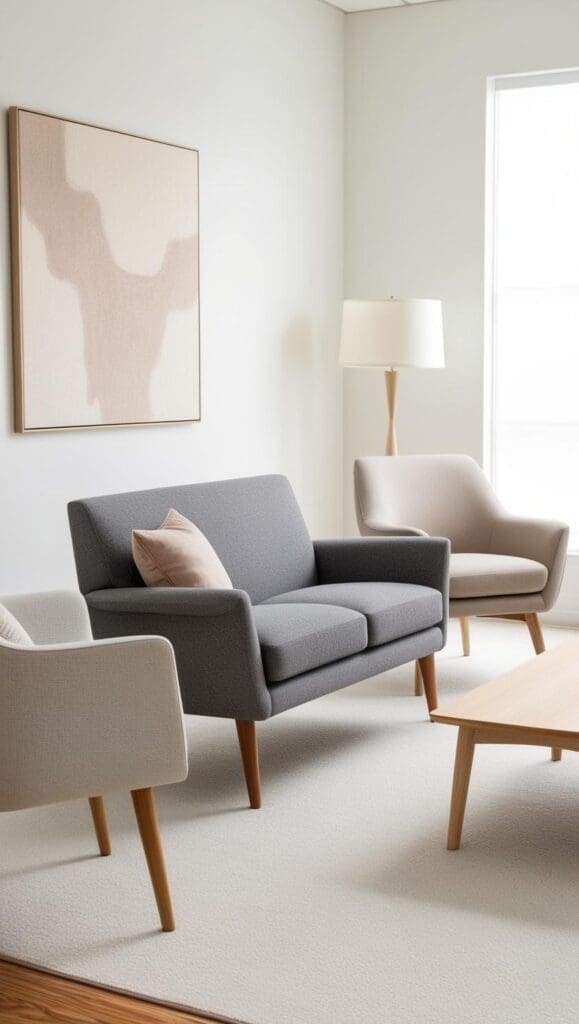
These sofas are defined by clean lines, tapered wooden legs, and a minimal silhouette. They offer a balance of professionalism and warmth, making them ideal for therapy settings.
Recommended pick: Rivet Revolve Modern Sofa – Its neutral palette, medium-firm cushions, and sleek profile work well in both modern and traditional therapy spaces.
Chesterfield Sofas
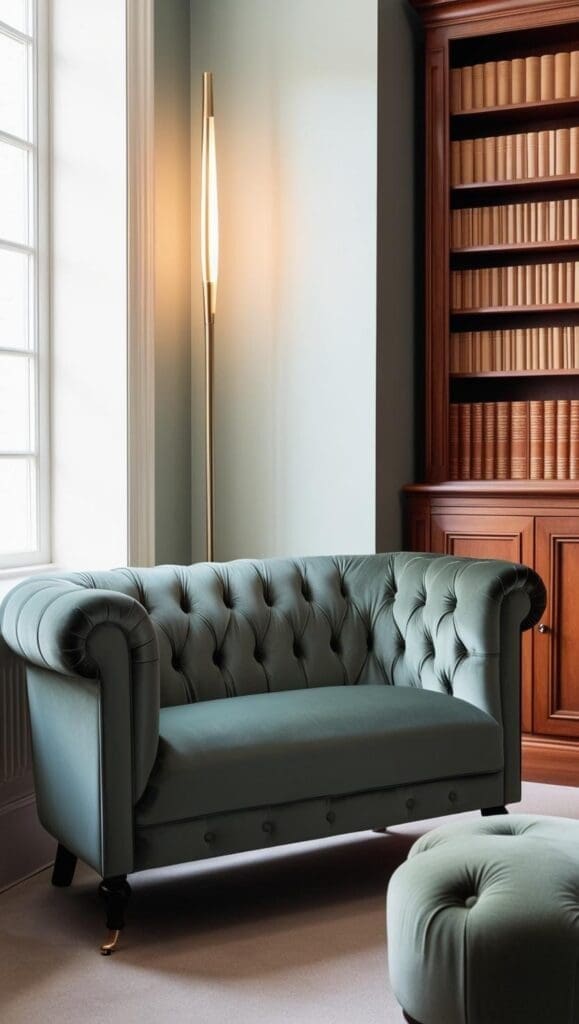
Recognizable by their tufted backs and rolled arms, Chesterfield sofas add elegance and structure to any office.
Why it works: It provides a sense of formality and containment, ideal for more traditional or structured therapeutic approaches.
Recommended pick: Stone & Beam Chesterfield Sofa – Offers comfort, structure, and a timeless look.
Modern Minimalist Sofas
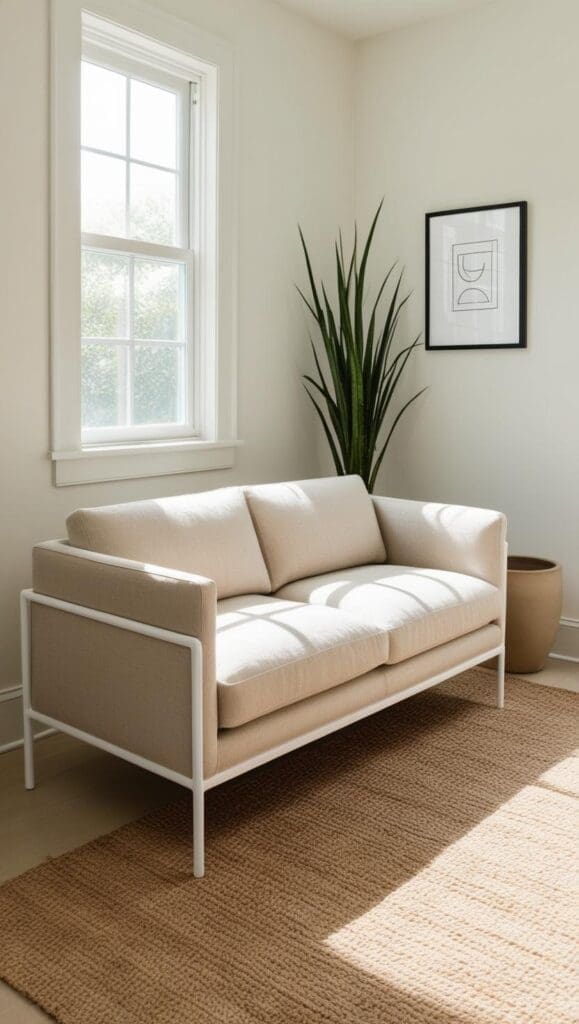
Low-profile, sleek, and simple, these sofas work well in smaller spaces or contemporary offices. They don’t compete for attention, allowing the client and conversation to take center stage.
Recommended pick: Willa Arlo Beige Sofa – Clean design, neutral upholstery, and good back support.
Scandinavian-Style Sofas
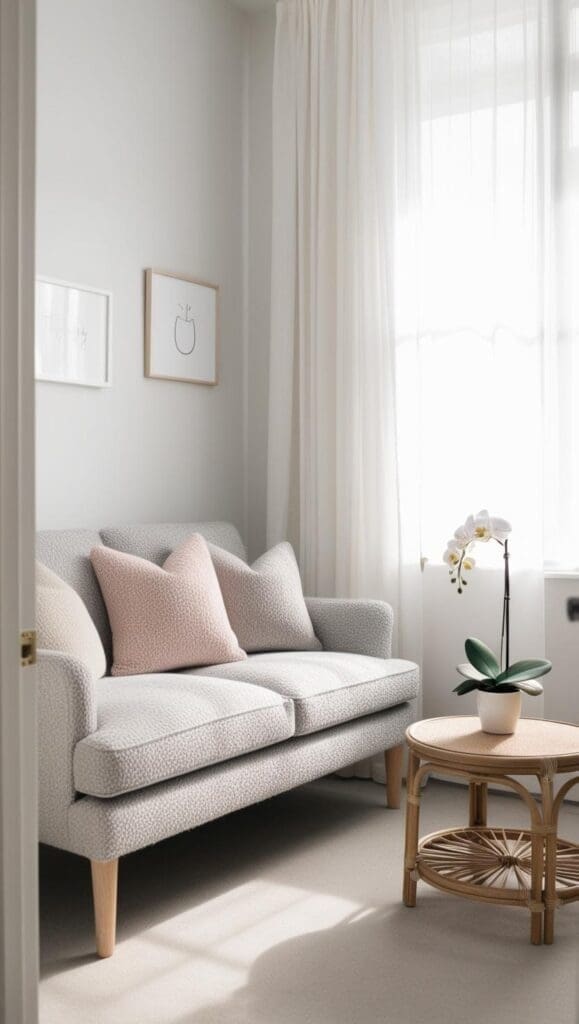
Scandinavian pieces focus on natural materials, light colors, and simplicity. These sofas bring a sense of calm and order to the room.
Recommended pick: Novogratz Brittany Sofa Futon – Great for small therapy offices or multi-use spaces. It’s cozy, practical, and affordable.
Convertible Loveseats
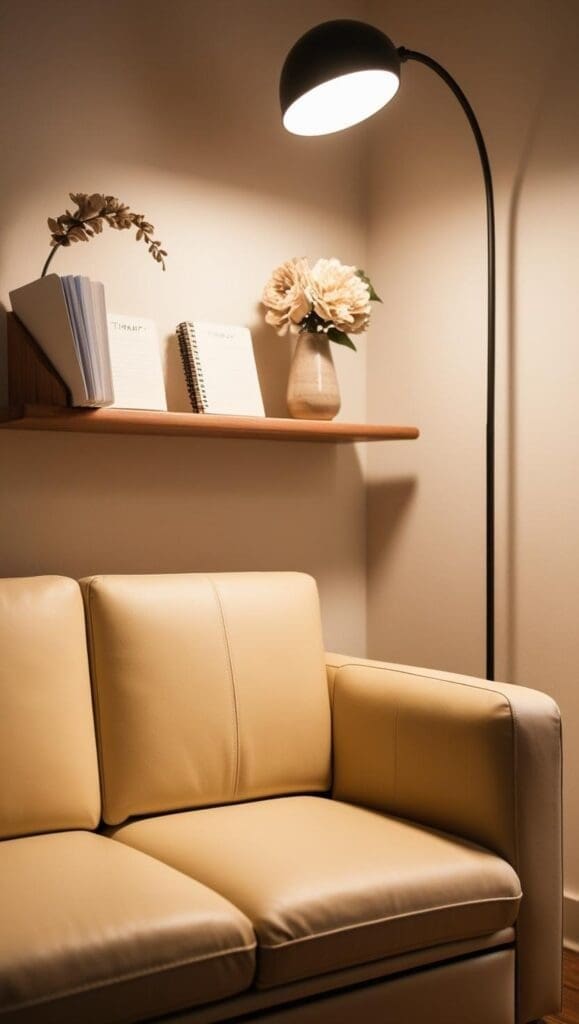
Ideal for therapists who use their office as a multipurpose space or work in compact environments. These sofas can transform into beds or loungers if needed.
Recommended pick: DHP Emily Futon Couch – Modern, space-saving, and versatile without sacrificing comfort.
Styling Tips: How to Make Your Sofa a Statement Piece
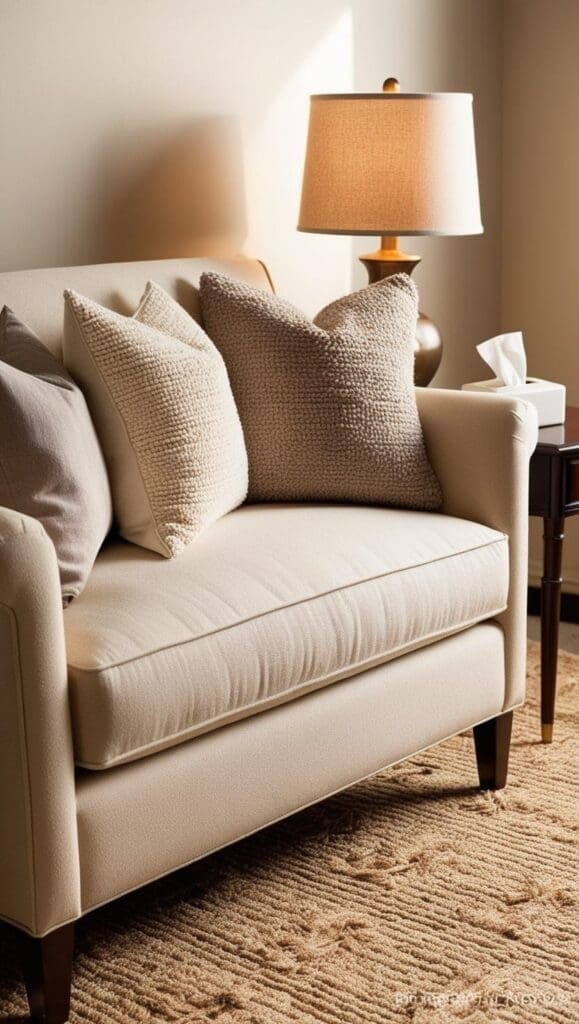
Use an Area Rug to Ground the Space
Placing a rug underneath the sofa defines the seating area and adds warmth. Choose a soft texture in a neutral or calming color.
Add Pillows Thoughtfully
Select one or two throw pillows in soft fabrics like cotton or boucle. Avoid excess clutter or large decorative pillows that might be distracting.
Consider the Backdrop
Hang calming artwork, a nature-inspired canvas, or a neutral-toned print above the sofa. Avoid mirrors or overly personal imagery that might shift focus away from the therapeutic process.
Provide Functional Add-Ons
Keep a side table within reach for tissues, hand sanitizer, or a grounding object. Choose designs in wood, rattan, or other natural materials to maintain a cozy vibe.
Layout Tips for Sofa Placement

- In individual therapy: Place the sofa at a slight angle to your chair to promote natural conversation without direct confrontation.
- For couples therapy: Position the sofa directly across from your therapist chair for balanced communication.
- In small rooms: Place the sofa against a wall to maximize floor space. Use visual dividers like rugs or lighting to define the area.
Where to Buy the Best Sofas for Therapy Offices
You don’t need to break the bank to find a stylish, high-quality therapy sofa. Here are some trusted online sources:
Amazon – Offers a wide selection at every price point with user reviews and affiliate potential.
Wayfair – Great filters for size, style, and budget. Look for mid-century or Scandinavian-inspired designs.
Article – Higher-end modern furniture with a minimalist look and high-quality finishes.
IKEA – Affordable and practical. Consider the Klippan or Söderhamn lines for versatile options.
Target – Stylish sofas for smaller spaces with modern aesthetics and easy delivery.
Final Thoughts
The best therapy sofas strike a balance between comfort, durability, and visual calm. They should support the emotional tone you set in your office and align with how you practice.
Whether you’re furnishing a brand-new space or upgrading your current setup, I hope this guide helps you choose a sofa that feels just right—for your clients, and for you.
Looking for more therapy room inspiration? Explore:
For a full office makeover plan, see our Complete Guide to Designing a Calming Therapy Office.
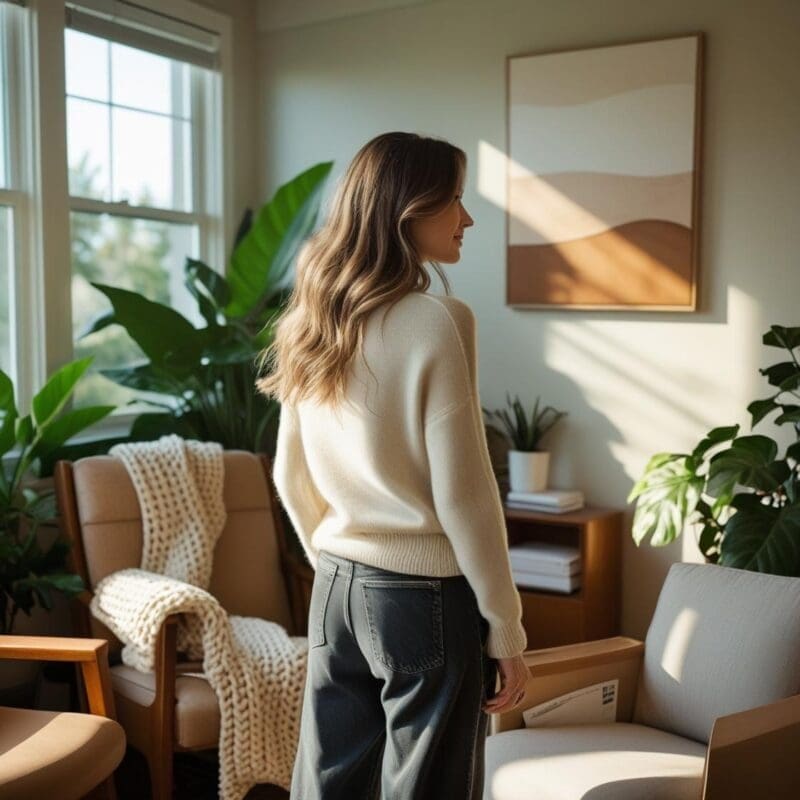
About the Author
Hi, I’m Eve, a former school counselor with a master’s degree in School Psychology and a passionate advocate for children and families navigating sensory challenges. As a mom of children with sensory sensitivities, I deeply understand the journey special-needs parents face, and I dedicate myself to researching and sharing practical solutions to help children thrive and feel comfortable in their bodies. My goal is also to empower counselors, therapists, and psychologists with creative strategies and supportive resources to enrich their everyday practice. When I’m not writing or exploring new therapeutic approaches, you’ll find me spending quality time with my family and continually seeking inspiration from everyday moments.

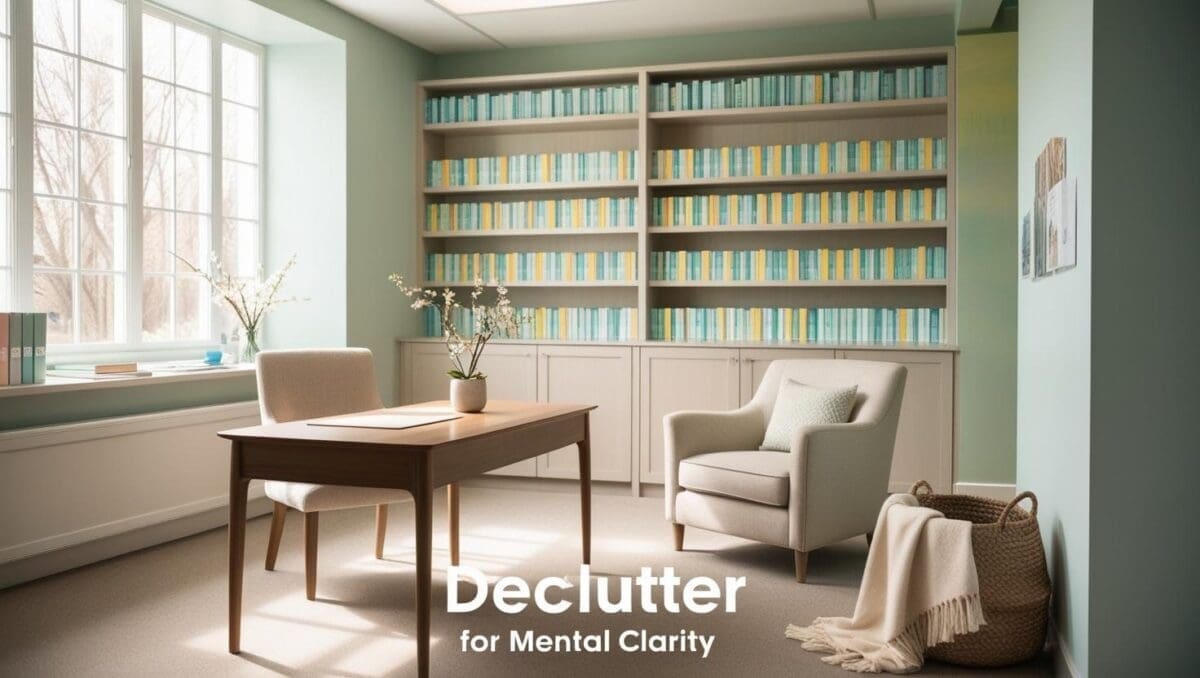
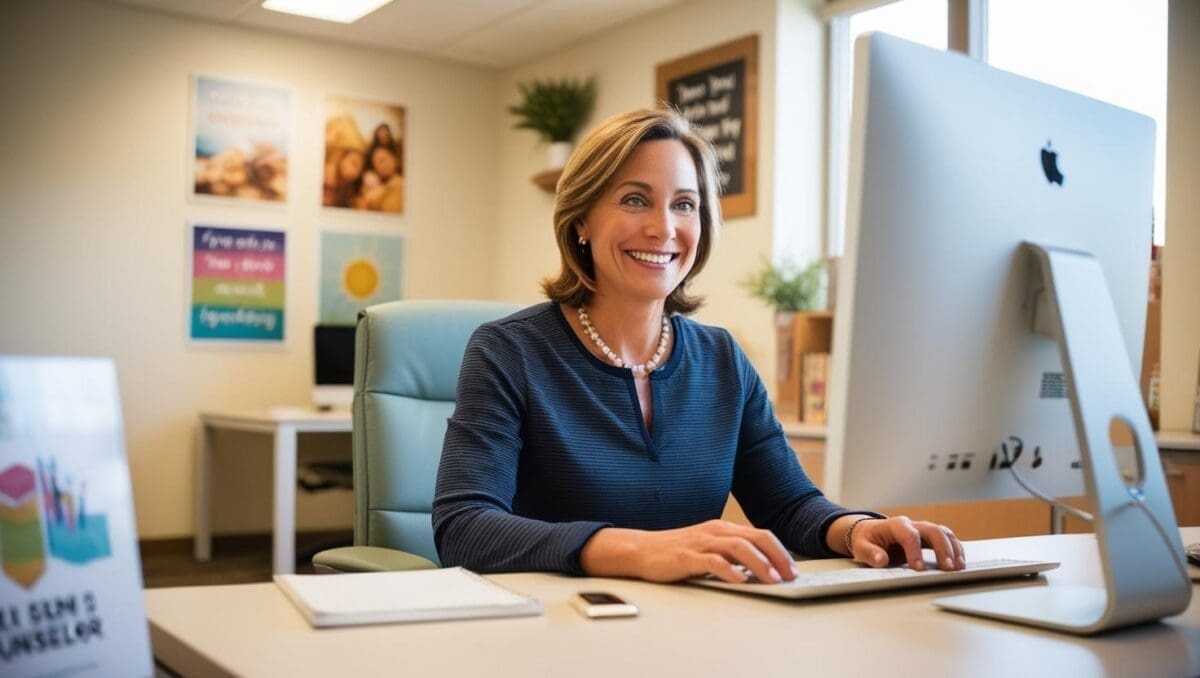
Pingback: Calming Therapy Room Design Tips That Actually Work - EveYou